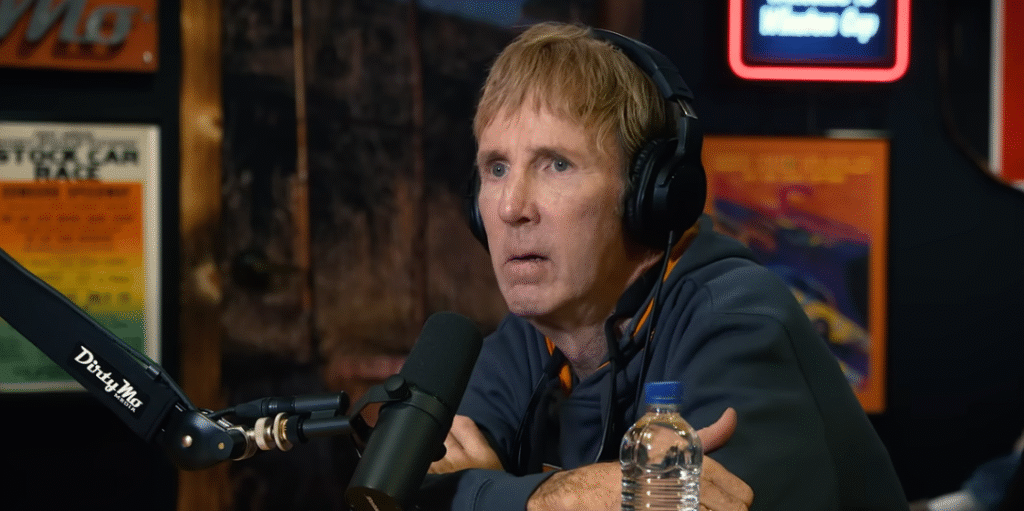| Attribute | Information |
|---|---|
| Full Name | Sterling Burton Marlin |
| Date of Birth | June 30, 1957 |
| Age | 67 (as of 2025) |
| Birthplace | Columbia, Tennessee, USA |
| Career Highlights | Two-time Daytona 500 winner (1994, 1995), 1983 NASCAR Rookie of the Year |
| Cup Series Starts | 748 races across 33 years |
| Wins in Cup Series | 10 |
| Family | Married to Paula; children: Steadman and Sutherlin |
| Notable Recognition | Named one of NASCAR’s 75 Greatest Drivers (2023) |
| Health Status | Diagnosed with Parkinson’s disease in 2012 |
| Surgeries | Underwent three deep brain stimulation surgeries |
| Recent Activity | Participated in local racing events, including Fairgrounds Nashville |
| Reference Source | https://en.wikipedia.org/wiki/Sterling_Marlin |

Sterling Marlin has continued to be a symbol of silent tenacity in recent years. Even as he struggles with Parkinson’s disease, the two-time Daytona 500 champion has continued to attend local races and show up for fans and family despite retiring from NASCAR’s national stage. Since receiving his diagnosis in 2012, Marlin has controlled his symptoms with a combination of medical care and a strong determination to keep going. His prominence has sparked a new wave of public interest—and worry—especially during his recent appearances in Tennessee.
Marlin appears noticeably thinner and moves with purposeful care in recent videos that have been circulated online. His energy is more brittle, and his speech is slower. Despite their profound impact, these indications do not imply surrender. Instead, they symbolize the struggle he faces every day—not while operating a motor vehicle, but rather inside his own nervous system. Since receiving a diagnosis at age 55, he has had three different deep brain stimulation procedures, which are a highly successful intervention that involves implanting electrodes in specific brain regions to help lessen rigidity and tremors.
It may seem improbable that a legendary figure from NASCAR would have brain surgery in secret while still competing in local races. However, Marlin has always pursued this course by being consistent rather than paying attention. He established a reputation as someone who showed up, remained steady, and let others take the lead during his decades in NASCAR. These days, it feels both familiar and surprisingly brave to see him at events like the Fairgrounds Nashville Speedway. His passion for the sport is so evident that he continues to show up despite his body’s resistance.
Even if Marlin only races sometimes, he sends a strong message. Marlin provides visibility and support to people dealing with chronic illness, much like actor Michael J. Fox, who has spoken out about his own Parkinson’s journey for years. His strategy, however, is more subdued and grounded in action rather than advocacy. More is said by his ongoing involvement than by any press conference ever could.
His tenacity is especially motivating to the larger NASCAR community. Toughness, both mental and physical, has long been praised in the sport. However, Marlin’s story demonstrates a distinct form of perseverance. It’s not about finishing 500 laps or surviving a collision. It’s about choosing to race despite having tremors, stiffness, and exhaustion every morning.
Viewers of Marlin’s most recent interviews were struck by how drastically his appearance had changed. NASCAR fans posted a Reddit thread describing his most recent public appearance as “heartbreaking and humbling.” Many people shared personal accounts of how his work inspired them and how their admiration for him has grown as a result of his current struggles. Accordingly, Marlin’s illness has unintentionally enhanced his legacy.
In keeping with the family tradition, his son Steadman and grandson Stirlin have also entered the racing world. Stirlin currently drives the No. 114 Super Late Model, which was formerly driven by Sterling. Although heartwarming, this generational connection has a deeper function. It grounds Marlin’s identity not only in his former successes but also in a continuous story that keeps changing in spite of his illness. Fans who still identify the Marlin with devotion, perseverance, and Tennessee pride will especially benefit from it.
Marlin’s presence has significantly raised racing fans’ awareness of Parkinson’s disease over the last ten years. He gives the illness a face that is recognizable, respected, and grounded by continuing to be active and visible. It brings up topics that are frequently challenging, particularly in male-dominated sports where showing vulnerability has long been frowned upon.
Although it is not a cure, deep brain stimulation has greatly lessened a lot of his symptoms. For Marlin, the procedure has been a lifeline, involving a surgically implanted device that controls aberrant brain signals. This therapy provides a degree of stability that enables him to continue participating in the racing world, unlike medication alone. His three such procedures indicate the disease’s progression as well as his relentless efforts to slow it down.
Marlin maintains ties with the racing community and fans by being persistent and strategic. Unlike many retired athletes who quietly vanish following health issues, his story is unique. He continues to put on his racing suit, attend races, and give interviews. He gives a modest homage to the life that molded him without resorting to theatricality.
The wider problem of how sports communities support their legends is also addressed by the social effects of Marlin’s illness. Stories like Marlin’s are promoting a more inclusive understanding of legacy, despite NASCAR and its sponsors’ historical emphasis on active drivers. Wins and stats are not the only things that define him. His true accomplishment is the way he keeps showing up, which is a very personal and effective way to raise awareness.
Marlin’s case may have a significant impact in the years to come as Parkinson’s research progresses. Organizations that deal with neurodegenerative diseases are already looking to well-known individuals like him to raise awareness of long-term wellness strategies, patient care, and funding. He has strengthened fan empathy and lessened stigma by fusing visibility and authenticity.
FAQs
Is Sterling Marlin sick?
Yes. Sterling Marlin has Parkinson’s disease and was diagnosed in 2012. He has been undergoing treatments to manage the symptoms.
Has his condition worsened recently?
Public appearances suggest that his symptoms have become more visible, but he remains active and occasionally races locally.
What treatment has he undergone?
He has received three deep brain stimulation surgeries, a procedure that has helped manage motor-related symptoms of Parkinson’s.
Does he still race?
Yes, though less frequently. He participated in a recent event at Fairgrounds Nashville Speedway, demonstrating ongoing involvement in racing.
Is Parkinson’s disease curable?
Currently, there is no cure. However, treatments like medication and deep brain stimulation can be particularly effective at reducing symptoms.
Is his family involved in racing?
Yes. His son Steadman and grandson Stirlin have both taken part in professional and semi-professional racing events.
Why is his story important?
Sterling Marlin’s public fight against Parkinson’s brings awareness, encourages others living with the condition, and reflects resilience in the face of adversity.
What makes his approach unique?
He leads by example—racing when possible, staying involved, and refusing to let his diagnosis define him.
What legacy does he leave in NASCAR?
Beyond his race wins, Marlin’s legacy is defined by consistency, humility, and now a particularly inspiring fight against a difficult illness.
Where can I find more updates about his health?
Reliable updates are shared through outlets like NBC Sports, The Tennessean, and Sportscasting, as well as his Wikipedia page.
